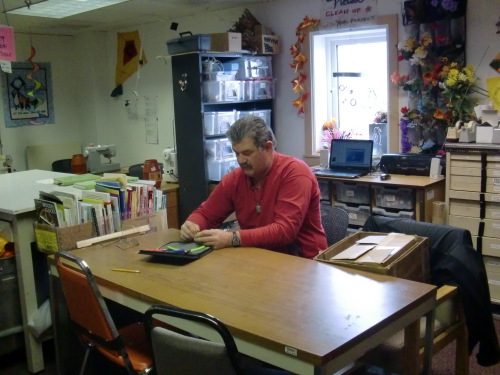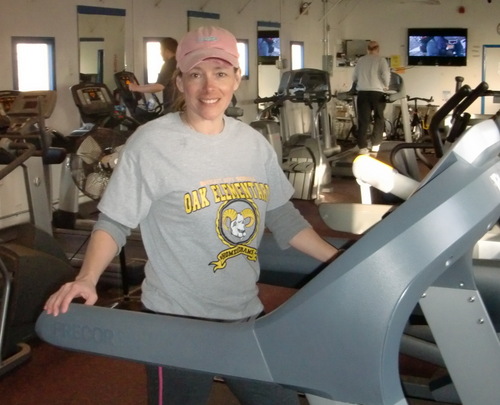I have to admit I am a little sad as this is my final meet McMurdo journal. But I've saved the best for last...
Take a peek at what you can do for your creative side, your healthy side and preparing to come back home.
All this, along with a brief tour of the Desalination Plant.
Craft Room
Get your creative juices flowing when you step inside the McMurdo Station craft room. There’s a little something for everyone: sewing, leather working, jewelry making - the supplies are endless. If you know me, you know I love to craft! While I didn’t spend much time here, I’m a crafty person and I could have spent hours here!

Fitness Room
McMurdo Station had no shortage of ways to keep physically fit - even if you are not working with seals. For all of the Oak Elementary 4th graders reading this journal, thank you so much for my T-shirt. It came in very handy during my workouts.

Preparing to go home
It’s been over 6 weeks since I’ve had a haircut. Yikes, my hair is getting really long! Since you can’t travel with your own pair of scissors, there’s only one remedy for a good haircut. Go the local barber.

Desalination Plant
Here in McMurdo, I’m surrounded by water, but all of this water is either frozen or too salty to drink! I was curious about how we get water safe to drink, bathe in, and brush our teeth.
Just like in Memphis, I turn on the tap and water comes out. But how does that water actually get to the tap? Since Antarctica is a desert, all the water comes from the ocean. It’s not the same tasty water like back home.
Do they simply melt the ice or does the water come from somewhere else?
Let’s investigate!
Water is pumped from the ocean to the Water Treatment Plant. But we can’t drink that water – it’s too salty! Drinking sea water will just make you thirstier, and it can be harmful to your body.
How, then, do you turn salt water into fresh water?

It’s a process called desalination, which simply means taking salt out of sea water. It sounds simple, but it is very complicated! Water is heated, put through a sand filter, and goes through a process called reverse osmosis.
Osmosis is when water in a solution moves from an area of low concentration to an area of high concentration. So, let’s say I had two liquids separated by a membrane – one is salt water (high salt concentration) and one is fresh water (low salt concentration). In natural osmosis, the water would flow from the fresh water side to the salt water side, diluting the salt water. It would continue to flow until the salt concentrations were equal. But this is the opposite of what we need!
That’s why, at the desalination plant, they use reverse osmosis instead!
In reverse osmosis, water is pushed through filters containing membranes. These membranes have tiny holes in them, so tiny you can’t even see them! The pressure pushes the water through the tiny holes in the membranes, leaving the big salt molecules behind.
Pretty neat process, don’t you think?

Now that the salt has been removed, the water is almost ready. A few things have to be added first.
- Chlorine is added to disinfect the water.
- Calcium carbonate makes the water healthier and taste better.
- Soda ash gives the water the right pH.
Gulp! Now it’s ready to drink!
It’s a lot of work to process the water! That’s why we have to limit our showers and laundry.


Comments